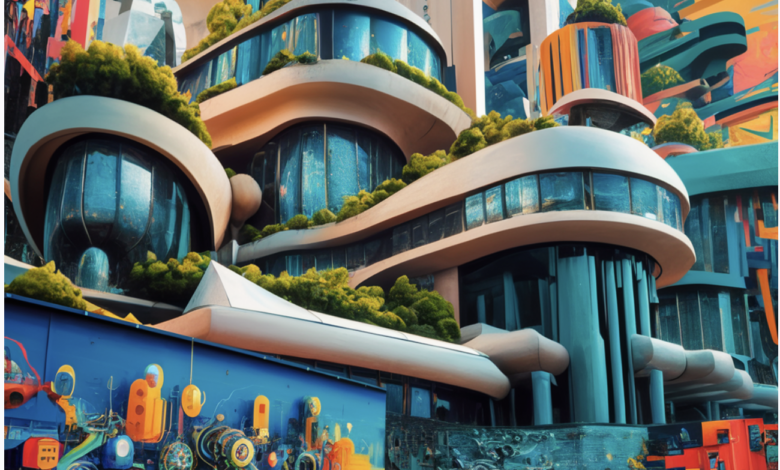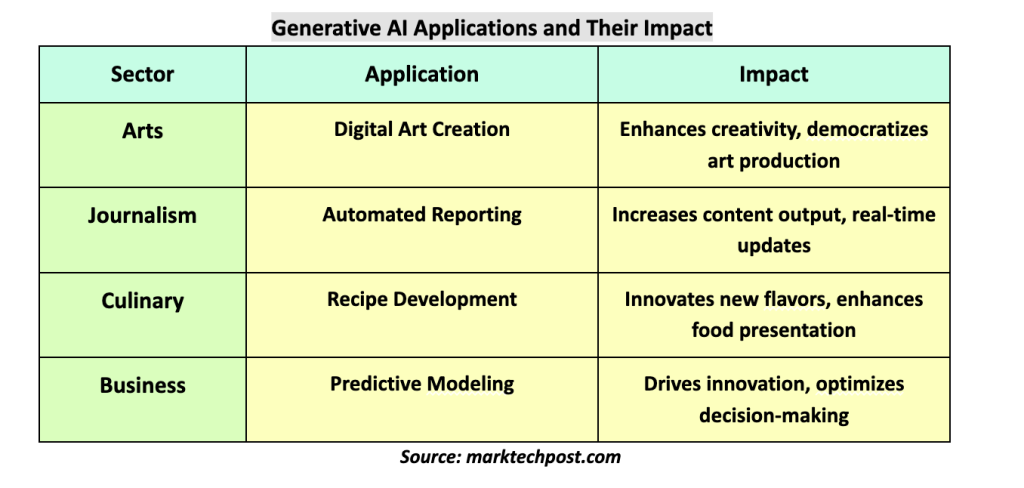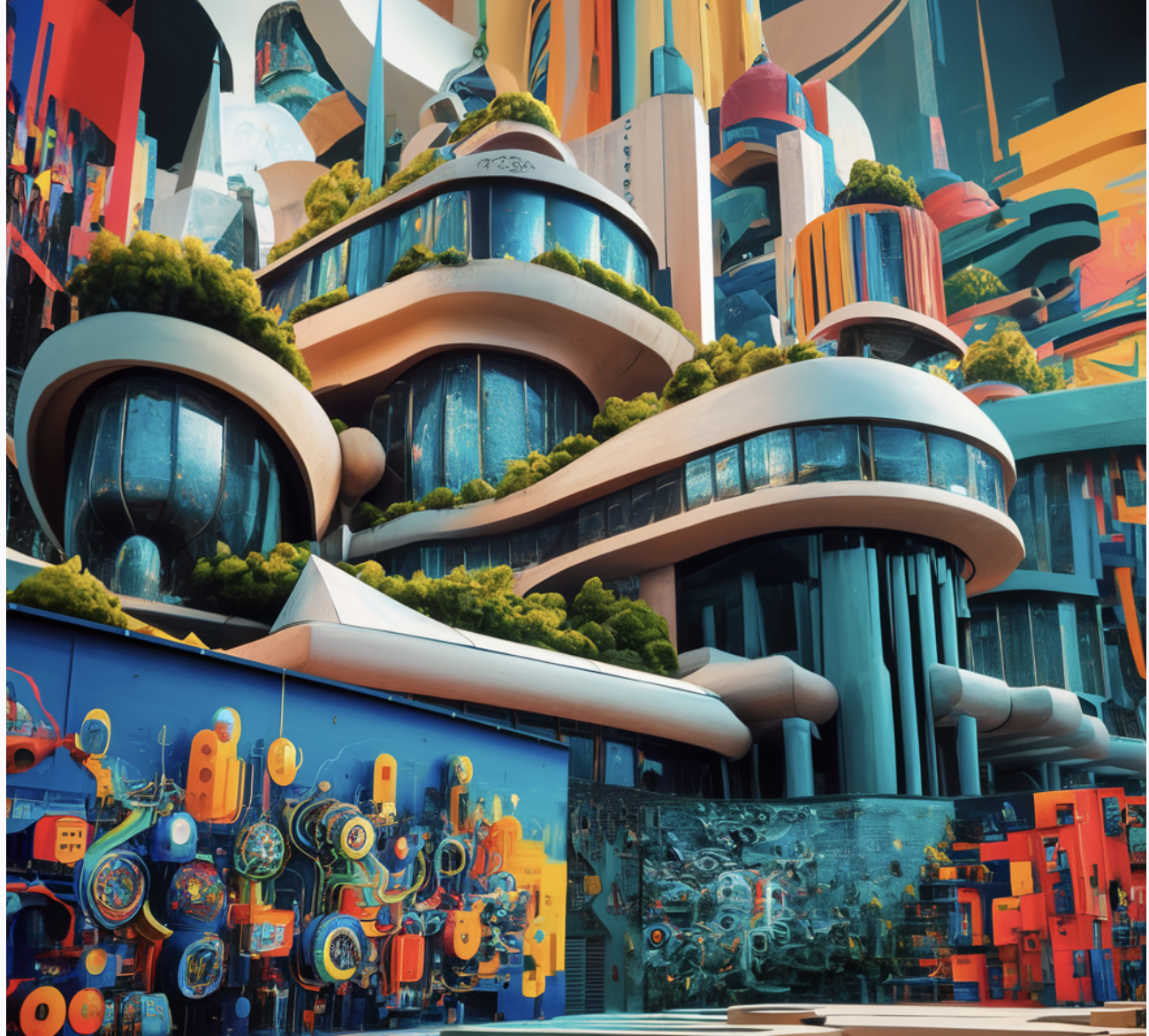The Rise of Generative AI: From Art to Content Creation

Generative Artificial Intelligence (AI) has emerged as a transformative force across various domains, from art to content creation. This innovative technology utilizes machine learning algorithms to produce content autonomously, ranging from images and music to text and videos. In recent years, generative AI has gained significant traction due to its ability to generate novel, realistic, and diverse outputs, revolutionizing creative processes and content generation pipelines.
Applications in Art and Creativity
- Generative Adversarial Networks (GANs) in Art:
- GANs enable the creation of lifelike paintings, pushing the boundaries between human and machine-generated art.
- Example: AI artist Robbie Barrat utilizes GANs to produce artworks that challenge traditional concepts of authorship and artistic merit.
- Music Creation with AI:
- OpenAI’s MuseNet and similar systems can compose original music across various styles and genres, enhancing musicians’ creativity.
- Generative AI algorithms analyze existing musical compositions to generate new melodies, harmonies, and rhythms, thus supporting composers and songwriters in their creative processes.
Content Creation and Marketing
- AI-Generated Content for Marketing:
- AI platforms like Copy.ai and Jasper.ai generate compelling marketing materials, including copy for social media posts, blog entries, & product descriptions.
- This technology saves businesses time and resources while ensuring communication consistency and quality.
- AI in Design and Visual Content:
- Tools like Canva’s “Design with AI” and Adobe’s Sensei harness AI to produce custom graphics, logos, and animations that align with user preferences and branding guidelines.
- These AI-driven design tools make professional-quality graphic design accessible to companies of all sizes, eliminating the need for specialized skills or costly software.
Use Cases in Film and Entertainment
Generative AI also makes waves in the film and entertainment industry, transforming how content is produced and consumed. Filmmakers and animators leverage AI-powered tools like DeepDream and DAIN to enhance visual effects, streamline animation processes, and create immersive virtual worlds. AI algorithms can analyze audience preferences and trends to generate personalized recommendations and streaming content, enhancing the viewer experience and driving engagement.
Generative AI Applications and Their Impact

Challenges and Ethical Considerations
Despite its benefits, the rise of generative AI also poses significant ethical challenges. The main concerns include copyright issues, the potential loss of jobs in creative fields, and the dilution of human creativity. The training data for these AI systems can perpetuate existing biases, leading to outputs that may reinforce stereotypes or misrepresentations.
The nature of generative AI raises questions about the originality of AI-generated content and the extent of human involvement in the creative process. These concerns necessitate transparent disclosure about the use of AI in creative works and call for regulations to manage and guide the ethical use of these technologies.
Conclusion
Generative AI has indeed revolutionized the realm of creative work, presenting both extraordinary opportunities and formidable challenges. As this technology evolves, it will be crucial to balance its benefits with mindful consideration of its societal impacts, ensuring that it augments human creativity without replacing it. The future of generative AI will largely depend on our ability to harness its potential responsibly, promoting innovation while safeguarding artistic integrity and cultural diversity.
References:
- Goodfellow, Ian, et al. “Generative Adversarial Networks.”
- https://aiartists.org/art-ai
- https://openai.com/blog/musenet/
- Copy.ai. “AI Copywriting Tools for Content Marketing.”
- https://www.canva.com/features/design-with-ai/
- https://www.adobe.com/sensei.html
- DeepDream. “Create Vivid Hallucinogenic Images with DeepDream.”
- DAIN. “DAIN: Depth-Aware Video Frame Interpolation.”
- Netflix. “How Netflix Uses AI to Predict Your Next Series Binge.” Netflix TechBlog, 2017
- Radford, Alec, et al. “Learning Transferable Visual Models From Natural Language Supervision.”
Hello, My name is Adnan Hassan. I am a consulting intern at Marktechpost and soon to be a management trainee at American Express. I am currently pursuing a dual degree at the Indian Institute of Technology, Kharagpur. I am passionate about technology and want to create new products that make a difference.





